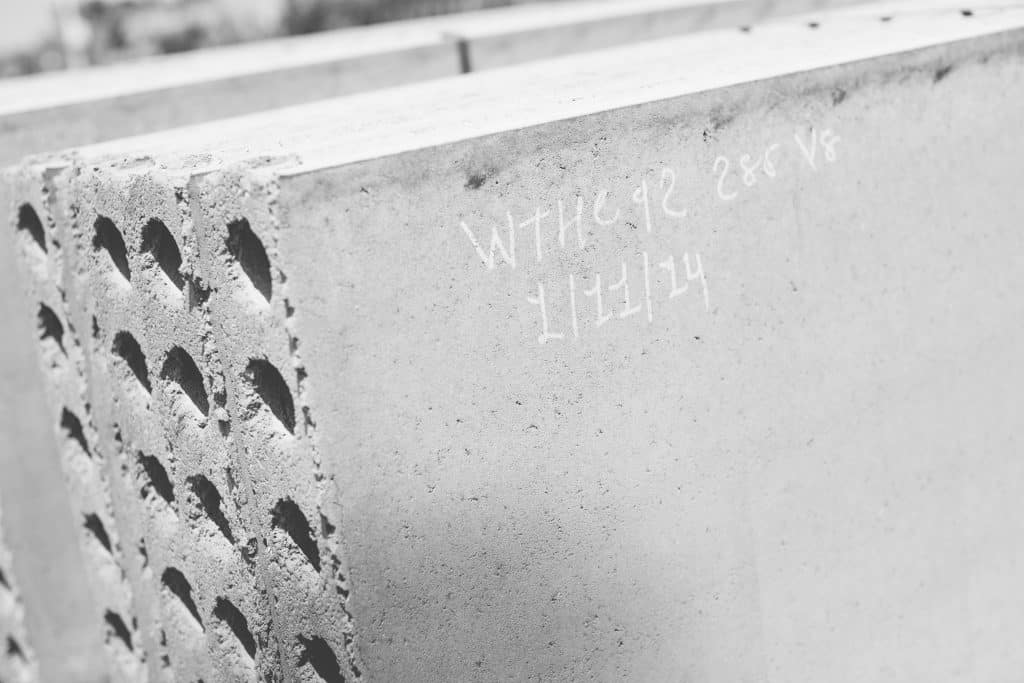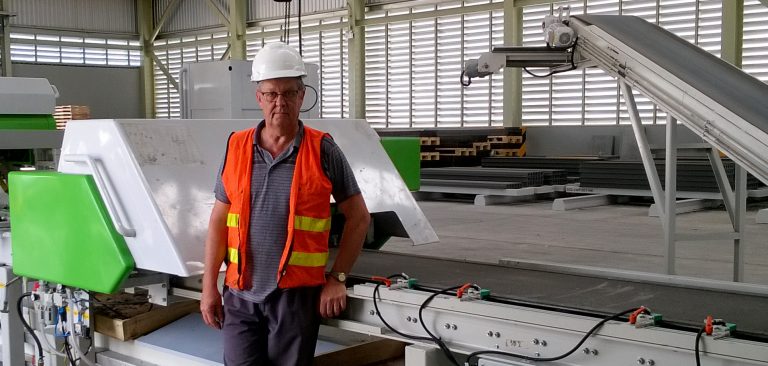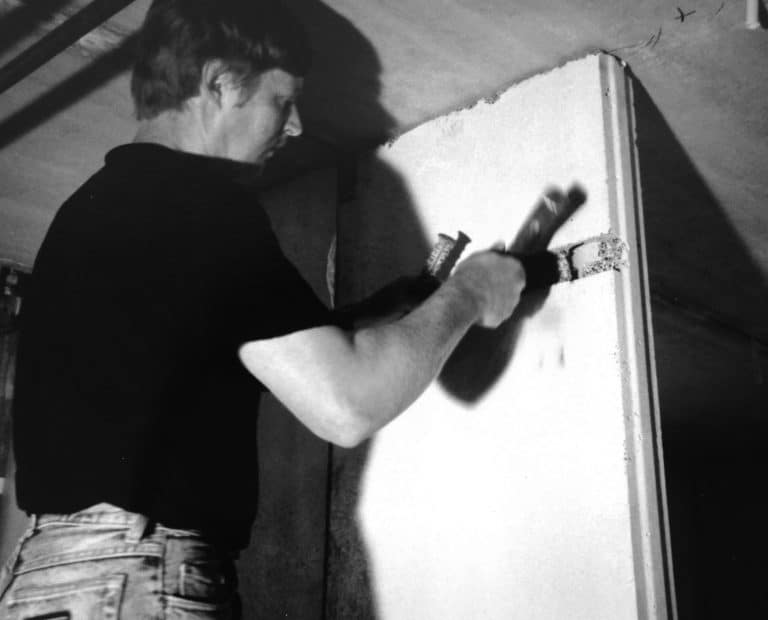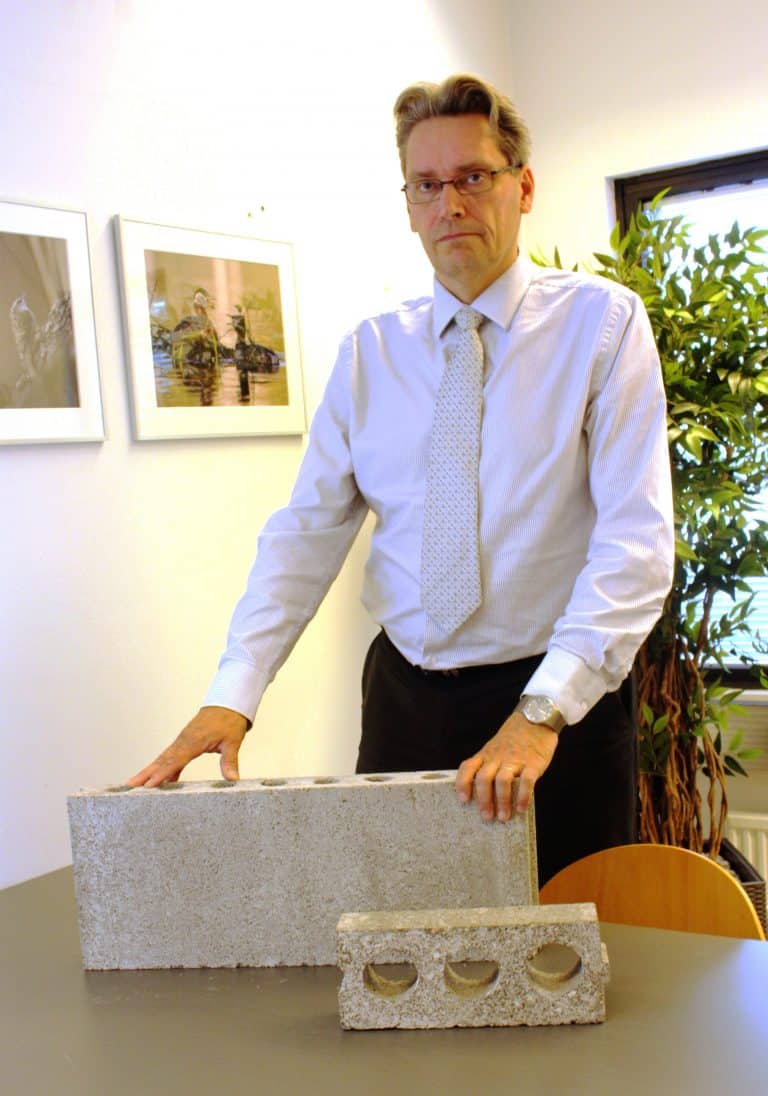Advanced technology has sustained Acotec through the decades

Lightweight expanded clay aggregate (Leca) has stood the test of time in Acotec wall production. Leca replaced the wood chip as a concrete raw material in Acotec’s early years of the late 1980s. Since then this economical partition wall technology has successfully penetrated into Asian construction markets.
The origins of Acotec, Advanced Construction Technology, go back to laboratory test results run by Finnish technical student Petteri Laitinen in 1990 – 1991. At the time, Laitinen was completing his Master’s thesis in Oulu University’s technical faculty where he developed the new lightweight concrete recipe under contract with Acotec Ltd.
Founded in 1988, Acotec Ltd was in need of a new concrete mix for its light, non-load bearing partition walls. The first Acotec line had already been delivered to Singapore in 1987 on behalf of Acotec´s predecessor, using wood chip concrete as material.
“Lightweight concrete partition walls were targeted to developing markets where the need for inexpensive, cost-effective construction technologies was growing quickly. However, the wood chip concrete didn’t meet the market requirements,” notes Petteri Laitinen, who now works as a Sales Director at Elematic, about the early stages of Acotec production. Elematic acquired Acotec’s business operations in 2001.
Based on Laitinen’s research, and because of these customer needs, concrete was replaced with a better and lighter raw material.
“Lightweight expanded clay aggregate, Leca, significantly increased the quality of the wall,” Laitinen explains.
Leca consists of small, lightweight, expanded particles of burnt clay. Thousands of small, air-filled cavities give Leca its strength and thermal insulation properties.
“With Leca, it was also possible to get rid of the additives and chemical processes used with the wood chip concrete. The entire production process became more simple and cost-effective.”
Successful line design
Along with the new concrete material, the Acotec line was redesigned to meet new requirements. A high level of automation, good usability, and a small scale were among the priorities in the planning process that took place around the turn of the decade.
“The design process of the line succeeded,” tells Elematic Technical Advisor Heikki Mikkola. Mikkola and his team developed the modern production line in the late 1980s. It has been installed in about 60 locations over the decades with very few changes. Mikkola started to work for Acotec Ltd in 1989 and continued with Elematic from 2001. He has been involved in all of the line installations and deployments.
“The line is compact and thus easy to install into existing facilities. The high level of automation enables a good and constant quality, and makes it possible to perform the production with only few workers,” Mikkola explains about the line properties that have stood the test of time well.

Conquering the Asian market
Modern Acotec technology marks its official inception as of 1991, when the first line was sold to the Finnish concrete supplier Rakennusbetoni ja Elementti Oy. They started to produce light non-load bearing partition walls with its own trademark, ACO. Petteri Laitinen then followed the technology to Rakennusbetoni where he continued to develop the use of Acotec walls as well as promote the new and innovative light, non-load bearing partition walls that blended high quality and cost effectiveness.
The next Acotec line was soon sold to Malaysia where the precast company PJDMALTA started Acotec wall production in 1994. Malaysia and subsequently the Philippines, Korea, Taiwan and China during the next few years have since became important areas for the technology. The Asian construction boom in the 1990s played an important role in development of the technology.
“The tradition of brick construction in Asian countries is favorable to lightweight concrete. As compared to brick, the features of Acotec walls are far more preferable in terms of installation speed, cost effectiveness, quality, and security of supply,” Laitinen explains. “The line can also be used with standard concrete, which is important in Asia.”

Complete service pays off
According to Petteri Laitinen, complete service has been the key to the success of the technology.
“It’s not worth selling just the line and walls, but an entire service, including the training of local workers to use the line and properly install the walls. This has been an important lesson to learn in the early years,” Laitinen says.
“Starting a complete service in early 1990s was a decisive move forward for us. Our own service team could ensure the right procedures and high quality on site, which was highly appreciated by our customers.”
Petteri Laitinen, like Heikki Mikkola, has continued to work with Acotec technology with full speed after Elematic acquired the company in 2001. He is looking back to the transaction as a favorable shift for both parties.
“It was a win-win situation: Acotec lightweight partition walls completed Elematic’s portfolio and, to the same extent, the technology benefits from Elematic global marketing network.”
Laitinen is delighted by the technology’s new phase, marked by three new automation and capacity levels.
“After a long career within the field, I’m still very excited about the newest development. It is moving the technology in the right direction.”
